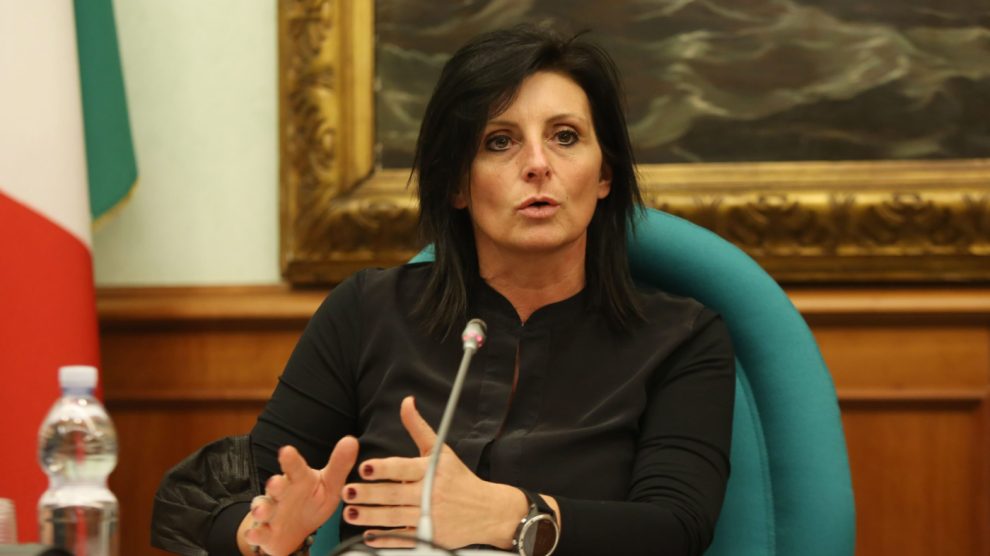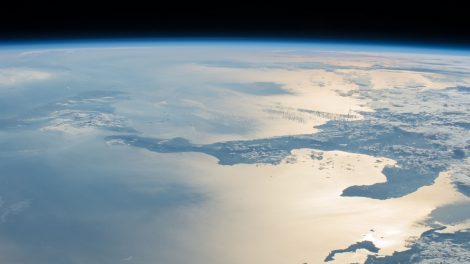The following are excerpts from our original Italian-language interview with Italy’s Deputy Minister for the Environment and Energy Security, Vannia Gava. Please find the full translated text below.
On nuclear within the European Commission’s Net Zero Industry Act. Fourth-generation nuclear “does appear among the technologies that we will have to produce within EU borders to combine decarbonisation and strategic independence. Common sense won over ideological environmentalism.”
- “Admittedly, the measure may be less incisive than we would have expected reading the draft [but] at least consistent with the content of the delegated act to the RED II Directive […] according to which hydrogen produced through nuclear energy is defined as ‘green’.”
On the government’s stance on nuclear. “[This] Italian government has always espoused a principle of technological neutrality: if you really believe in the energy transition, no source of energy should be demonised or exalted a priori, but studied and evaluated.”
- Nuclear as baseload power can flank the intermittent renewables in tomorrow’s energy system, she noted.
On its next steps. “The update of Italy’s National Integrated Energy and Climate Plan (PNIEC) can be an opportunity to promote a comprehensive review of energy and climate policies, to foster growth and ensure security in the transition, choosing today the most promising avenues for the future.”
- “The first step is certainly to incentivise research, then to start drawing up an updated legal framework, reopening the way to nuclear power after the two referendums of 1987 and 2011, on which Parliament will have to work.”
On the state of the Italian industry. “Through the National Agency for New Technologies, Energy and Sustainable Economic Development (ENEA), the National Institute of Nuclear Physics (INFN), the National Research Centre (CNR) and many universities and private companies, Italy is conducting advanced research with high potential.”
A few days ago, you feared the EU would eliminate nuclear power from the draft of the Net Zero Industry Act, which still has to go through Parliament and the EU Council. Is this a concrete hypothesis?
Nuclear power is in the final version of the Net Zero Industry Act, presented by the European Commission on Thursday. In fact, “advanced technologies to produce energy from nuclear processes with minimal waste from the fuel cycle, small modular reactors and related best-in-class fuels” appear among the technologies we will have to produce within EU borders to combine decarbonisation and strategic independence. Common sense won over ideological environmentalism.
Admittedly, the measure may be less incisive than expected reading the draft, which presented a much more concise list. Still, let us remember that the NZIA is an initiative to systemise a more streamlined legislative framework capable of simplifying authorisation procedures for investments useful for decarbonisation: a winning mechanism to respond to the USA’s Inflation Reduction Act and Japan’s plan for energy transition, demobilising private and public resources in the Old Continent, first and foremost those of RePowerEU.
It should be emphasised that the inclusion of nuclear power in the NZIA in this formulation is at least consistent with the content of the delegated act to the RED II Directive, presented a few weeks ago by the European Commission, according to which hydrogen produced through nuclear energy is defined as “green”. The role of nuclear energy is twofold: essential to assist renewables in the continuous production of emission-free electricity and essential to power highly energy-intensive processes, including electrolysis, to produce green or renewable hydrogen.
Countries like France want to keep nuclear power among the strategic technologies for the European greentech industry; others are working in the opposite direction. What is the position of the Italian government? What kind of repercussions does it foresee?
The Italian government has always espoused a principle of technological neutrality: if you really believe in the energy transition, no energy source should be demonised or exalted a priori but studied and evaluated. Wind and solar PV are, by nature, intermittent and discontinuous sources. Also, since there are not yet adequate accumulation and storage systems for large quantities of energy, it is necessary to ensure a minimum, continuous, and programmed supply – which in technical language is called baseload – through other secure and always-available sources. Today, gas and coal fulfil this task, accounting for 43% and 8% of Italy’s energy mix, respectively.
While decarbonising, the energy mix cannot do without a supplementary share of continuous sources such as hydropower, bioenergy and nuclear power. The update of Italy’s National Integrated Energy and Climate Plan (PNIEC) can be an opportunity to promote a comprehensive review of energy and climate policies to foster growth and ensure security in the transition, choosing today the most promising avenues for the future. The first step is undoubtedly to incentivise research, start drawing up an updated legal framework, and reopen the way to nuclear power after the two referendums of 1987 and 2011, on which Parliament will have to work.
A few days ago, the secretary of the Environment Committee in the Chamber of Deputies, Gianpiero Zinzi, presented a resolution to support the creation of new-generation nuclear power plants. Do you think it has the majority’s support?
It is about having a bold vision and planning long-term strategies, knowing that we must meet decarbonisation commitments without shutting down the country’s industry. This is an important challenge for the government and the institutions, a dutiful responsibility for those called upon to lead a country amid an economic, energy, and geopolitical crisis. However, we are talking about technologies that are widespread and used all over the world, such as nuclear fission, and new solutions, such as magnetic confinement fusion. Through the National Agency for New Technologies, Energy and Sustainable Economic Development (ENEA), the National Institute of Nuclear Physics (INFN), the National Research Centre (CNR) and many universities and private companies, Italy is conducting advanced research with high potential.
If we were to meet the necessary conditions, what role do you imagine for nuclear power in the Italian energy scene?
The role of nuclear power can only be central to the decarbonisation of the energy system. Unlike thermoelectric power from gas and coal, nuclear energy can be considered carbon-free and boasts a very low environmental impact: in both fission and fusion, the level of waste is contained, both in terms of quantity and danger. In addition, nuclear energy is continuous and can complement energy production from renewable sources, ready to intervene when there is no sun or wind to meet demand and ensure the electricity grid’s stability. Finally, the ease of finding nuclear fuel and the higher energy density can ensure autonomy and independence in terms of supply. We estimate that replacing the 38 billion cubic metres of gas that we import today to produce electricity will require fifteen 1600-megawatt reactors.
In your opinion, what are the strategic assets on which Italy and the EU must urgently focus in the industrial plan? Italy, for example, preserves and exports industrial know-how. Can they serve as a starting point for imagining an Italian nuclear renaissance?
In order to engage in decarbonisation and the challenge of climate neutrality, we find ourselves, unfortunately, having to chase China in the supply of critical raw materials: rare earth minerals for electrification and the ecological transition, semiconductors for digitalisation, but also materials to implement circular economy processes by replacing fossil fuels, such as ferrous scrap for the conversion of steel mill blast furnaces into electric furnaces. The NZIA will have to be effective in these areas to convince our companies to build large plants to produce microchips, batteries, photovoltaic panels and wind turbines.
Italy will soon have gigafactories, which are often the result of industrial reconversions and constitute an environmental and social opportunity before being industrial. Italy is the second-largest manufacturing country in Europe, and we have realised in recent months how energy-intensive our industry is. Nuclear power, therefore, makes it possible to produce energy at fixed and competitive production costs in the long term and is the solution to decarbonise and make the most energy-intensive sectors, such as the steel, glass, cement and ceramics industries, competitive, even in international markets.




